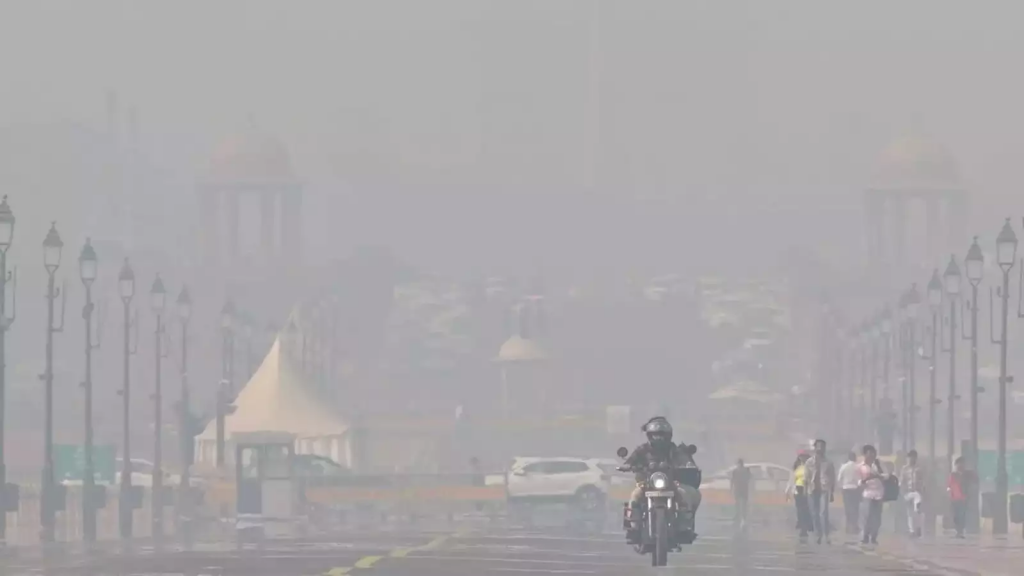New Delhi: Delhi experienced thick fog on January 3, with temperatures dropping to a low of 8 degrees Celsius. The air quality in the city worsened, with the Air Quality Index (AQI) reaching 318, categorized as “very poor.” This update came as the Central Pollution Control Board resumed its data reporting after a brief halt.
The forecast indicates maximum and minimum temperatures of 17 degrees Celsius and 8 degrees Celsius, respectively. Visibility significantly declined around 6 a.m., prompting authorities to take measures to ensure safety. Flights not equipped for low-visibility landings, particularly those not meeting CAT III standards, are likely to face delays or cancellations.
At the Safdarjung weather station—deemed a benchmark for Delhi’s climate—the maximum temperature reached 16.2 degrees Celsius on Thursday, slightly higher than the previous day’s 15 degrees Celsius but still three degrees below normal. The India Meteorological Department (IMD) defines “cold day” conditions as a maximum temperature falling 4.5 degrees Celsius or more below normal with a minimum temperature below 10 degrees Celsius; while Safdarjung did not meet this criteria, other weather stations such as Palam, Najafgarh, Pusa, and Narela reported “cold day” conditions.
Fortunately, relief is expected soon, as the IMD forecasts a slight uptick in temperatures due to an incoming western disturbance. The maximum temperature is projected to reach approximately 17 degrees Celsius on Friday and climb to 18 degrees Celsius by Saturday, with a slight increase of about one degree in maximum temperatures expected across several regions.
Previously, on Thursday, Delhi faced dense fog, with temperatures dropping to 10 degrees Celsius at around 5:30 a.m. Poor visibility led to potential disruptions at Indira Gandhi International (IGI) Airport, where runway visibility ranged from 200 to 500 meters and dropped to zero at 6 a.m. Flights equipped for low-visibility conditions were able to land, while others encountered delays and diversions.
